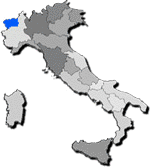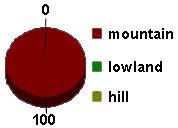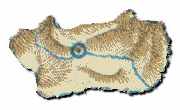 |
VALLE D'AOSTA |  Back to Italy |
| Provinces
- Region formed by a province: Aosta
Chief town - Aosta Surface - kmq 3262 National Parks - National Park of Gran Paradiso (1922)  Russian Version |
 |
|
|
||
 |
VALLE D'AOSTA |  Back to Italy |
| Provinces
- Region formed by a province: Aosta
Chief town - Aosta Surface - kmq 3262 National Parks - National Park of Gran Paradiso (1922)  Russian Version |
 |
|
|
||
 |
Origin of the Name |
| Reliefs - Passes - Coasts - Islands | |
| Landscape | |
| Agriculture - Stock-Farm - Fishing | |
| Industry - Tourism | |
| Position and Frontier | |
| Rivers - Lakes | |
| Climate | |
| Population | |
| Communication |
Origin of the name:
Romans after having defeated Salassi, a Gallic
population that lived in the valley of Baltea in 25 before Christ,
founded a city where rose a camp. It had called in honor of Ottaviano Augusto,
August Praetoria and from that name it derives the actual name of the Region
and the city of it: Aosta.
Landscape:
In the smallest region of Italy there are the tallest
mountains of Europe. The aspect of Val of Aosta is that typical of the tall
mountain with narrow and rocky throats, tall points, snow and perennial
glaciers, colored lawns, pastures, woods, small villages, typical houses,
luxurious hotels and roads with steep inclinations.
Agriculture - Stock-farm -
Fishing:
The geographical structure allows of take advantage of
little cultivable areas. The crops are only those characteristics of mountain
or rather potatoes, rye, apples and pears. The most important crop is however
that of the forage for the breeding of cattle, therefore the production of meat
is notable, of butter and cheeses, besides all the milk products.
Position and Frontier:
The region has dipped between Alps Graie and Alps
Pennine. It confines to north and west (political border of Italy) with France
and Switzerland, to east and to south with Piedmont, of which geographically
makes part of it.
Rivers - Lakes:
The principal river is Dora Baltea with many small
natural tributaries that in the time have dug some side valleys, meeting all to
thorn of fish in Basin of Dora Baltea.
Climate:
The climate is typical of the alpine regions: cold
rigid of winter and coolness in summer. In the period from October in March
snows abundantly, is in tall mountain that in the valleys.
Population:
The population has installed especially in the
valley bottom and along the course of Dora Baltea. Around a third alive in the
city of Aosta, the rest in small countries and suburbs around the city. The
greatest part of the inhabitants speaks a French dialect, the frank-Provenzal
patois and the bilingualism has recognized officially, also in the public and
administrative actions. The schools have the obligation to teach the French
language. A small minority that is found in Valley of Gressoney speaks the
German language and the inhabitants are called Wals.
Communication:
With the opening of the two piercing, that of Gran St.
Bernard and that of White Mountain inaugurated in 1963, a big economic
advantage was had for the region. The highway connects Aosta to Turin. There
are no international railway nets, only a regional line that crossing the
region, departing from Ivrea and arrives to Pré St. Didier next to Courmayeur.
Web Site designed by MediaSoft - © Copyright 1998-1999 - All rights reserved